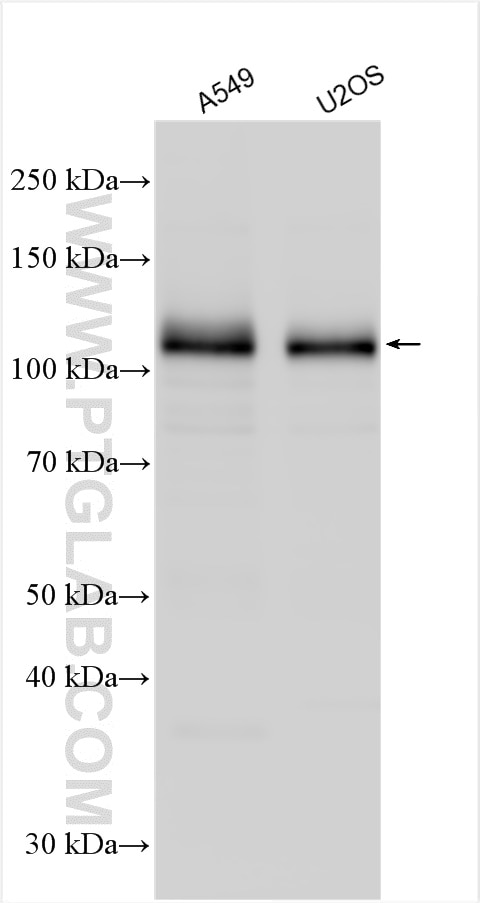Anticorps Polyclonal de lapin anti-DCBLD2
DCBLD2 Polyclonal Antibody for WB, ELISA
Hôte / Isotype
Lapin / IgG
Réactivité testée
Humain
Applications
WB, ELISA
Conjugaison
Non conjugué
N° de cat : 30245-1-AP
Synonymes
Galerie de données de validation
Applications testées
| Résultats positifs en WB | cellules A549, cellules U2OS |
Dilution recommandée
| Application | Dilution |
|---|---|
| Western Blot (WB) | WB : 1:1000-1:6000 |
| It is recommended that this reagent should be titrated in each testing system to obtain optimal results. | |
| Sample-dependent, check data in validation data gallery | |
Informations sur le produit
30245-1-AP cible DCBLD2 dans les applications de WB, ELISA et montre une réactivité avec des échantillons Humain
| Réactivité | Humain |
| Hôte / Isotype | Lapin / IgG |
| Clonalité | Polyclonal |
| Type | Anticorps |
| Immunogène | DCBLD2 Protéine recombinante Ag32823 |
| Nom complet | discoidin, CUB and LCCL domain containing 2 |
| Masse moléculaire calculée | 775 aa, 89 kDa |
| Poids moléculaire observé | 120 kDa |
| Numéro d’acquisition GenBank | BC029658 |
| Symbole du gène | DCBLD2 |
| Identification du gène (NCBI) | 131566 |
| Conjugaison | Non conjugué |
| Forme | Liquide |
| Méthode de purification | Purification par affinité contre l'antigène |
| Tampon de stockage | PBS avec azoture de sodium à 0,02 % et glycérol à 50 % pH 7,3 |
| Conditions de stockage | Stocker à -20°C. Stable pendant un an après l'expédition. L'aliquotage n'est pas nécessaire pour le stockage à -20oC Les 20ul contiennent 0,1% de BSA. |
Informations générales
DCBLD2, also known as ESDN or CLCP1, was first identified from human coronary arterial cells by a signal sequence trap method. DCBLD2 regulates proliferation, migration, and invasion in various tumors, including glioma, hypopharyngeal squamous cell carcinoma, and myxofibrosarcoma. The human DCBLD2 protein has a predicted molecular mass of ∼80 kDa based on its amino acid sequence, although it regularly displays an effective molecular mass of ∼130 kDa via SDS-PAGE (PMID: 30902898).
Protocole
| Product Specific Protocols | |
|---|---|
| WB protocol for DCBLD2 antibody 30245-1-AP | Download protocol |
| Standard Protocols | |
|---|---|
| Click here to view our Standard Protocols |


